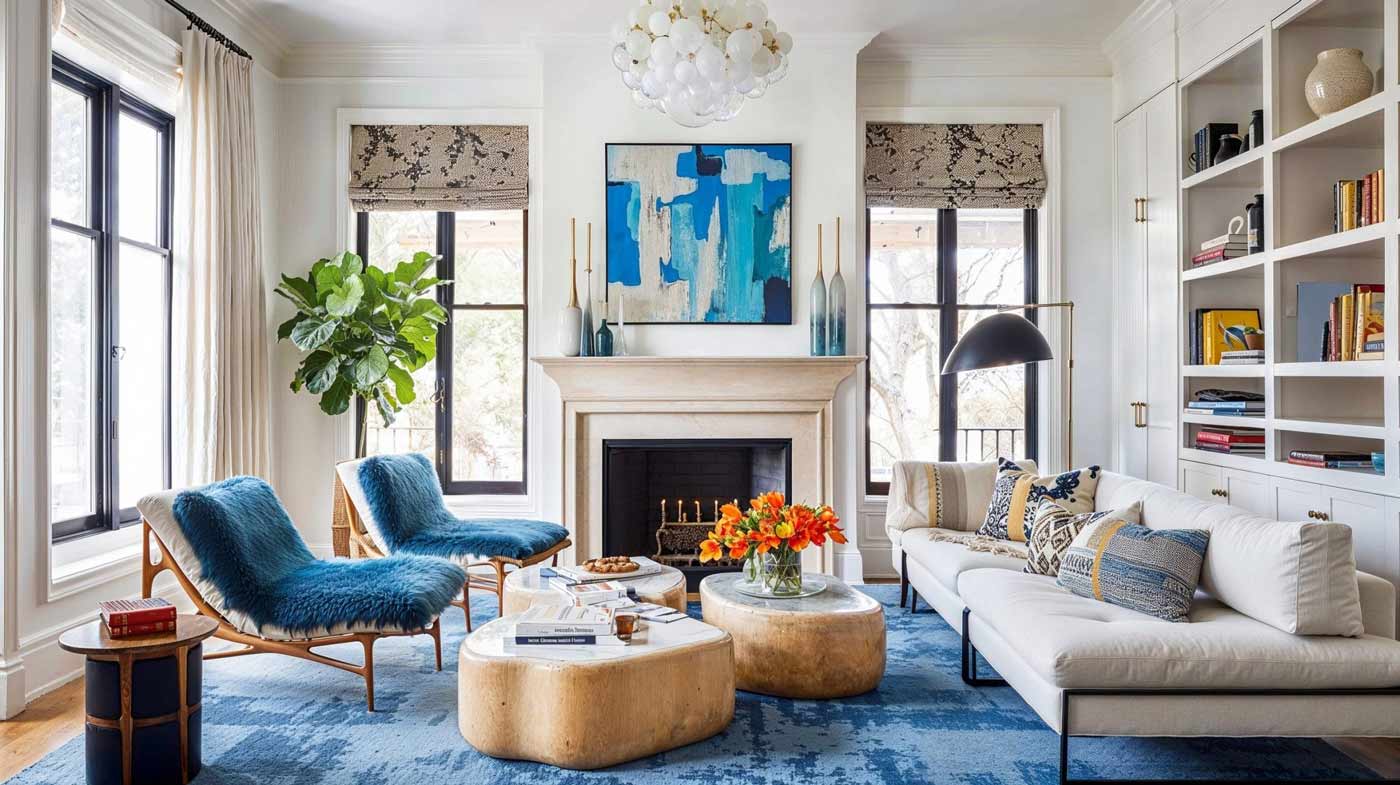Foundations of Timeless Interior Design in a Modern World
The Emotional Power of a Beautifully Designed Home
Your home is more than just a place to sleep and store your belongings. It’s a sanctuary, a space that reflects your personality, calms your mind, and energizes your days. In 2025, home design is no longer about choosing between aesthetics and practicality — it’s about merging both in ways that feel effortless. At the heart of this movement lies the idea of timeless decor — interiors that never go out of style — and it’s being elevated with modern innovation and intentional living.
A beautifully decorated space isn’t just pretty. It tells a story. It offers comfort when you need peace, sophistication when you seek pride, and functionality when life gets busy. When timeless elements — clean lines, neutral palettes, natural materials — meet smart technologies, modular furniture, and sustainable solutions, you get a space that is both soulful and future-proof.
Let’s explore how to create this balance and make your home a masterpiece of both tradition and trend.
Defining “Timeless” in the 2025 Design Landscape
So what exactly is “timeless” in interior design? It’s not just about going vintage. Instead, it’s about curating a look that feels rooted, intentional, and immune to trend fatigue. The timeless aesthetic often includes:
-
Neutral base tones: Whites, greys, beiges, warm creams.
-
Natural textures: Wood, linen, leather, stone, and wool.
-
Classic silhouettes: Sofas with clean arms, cane-backed chairs, solid wood tables.
-
Functional layouts: Open and adaptable spaces that prioritize comfort.
Yet in today’s fast-moving world, timeless design doesn’t mean static. A timeless home today might feature hidden wireless charging panels, smart lighting controls, and voice-integrated appliances — all hidden within materials and shapes that could belong in a Parisian flat from the ’40s.
It’s the balance of longevity and relevance that makes it magic.
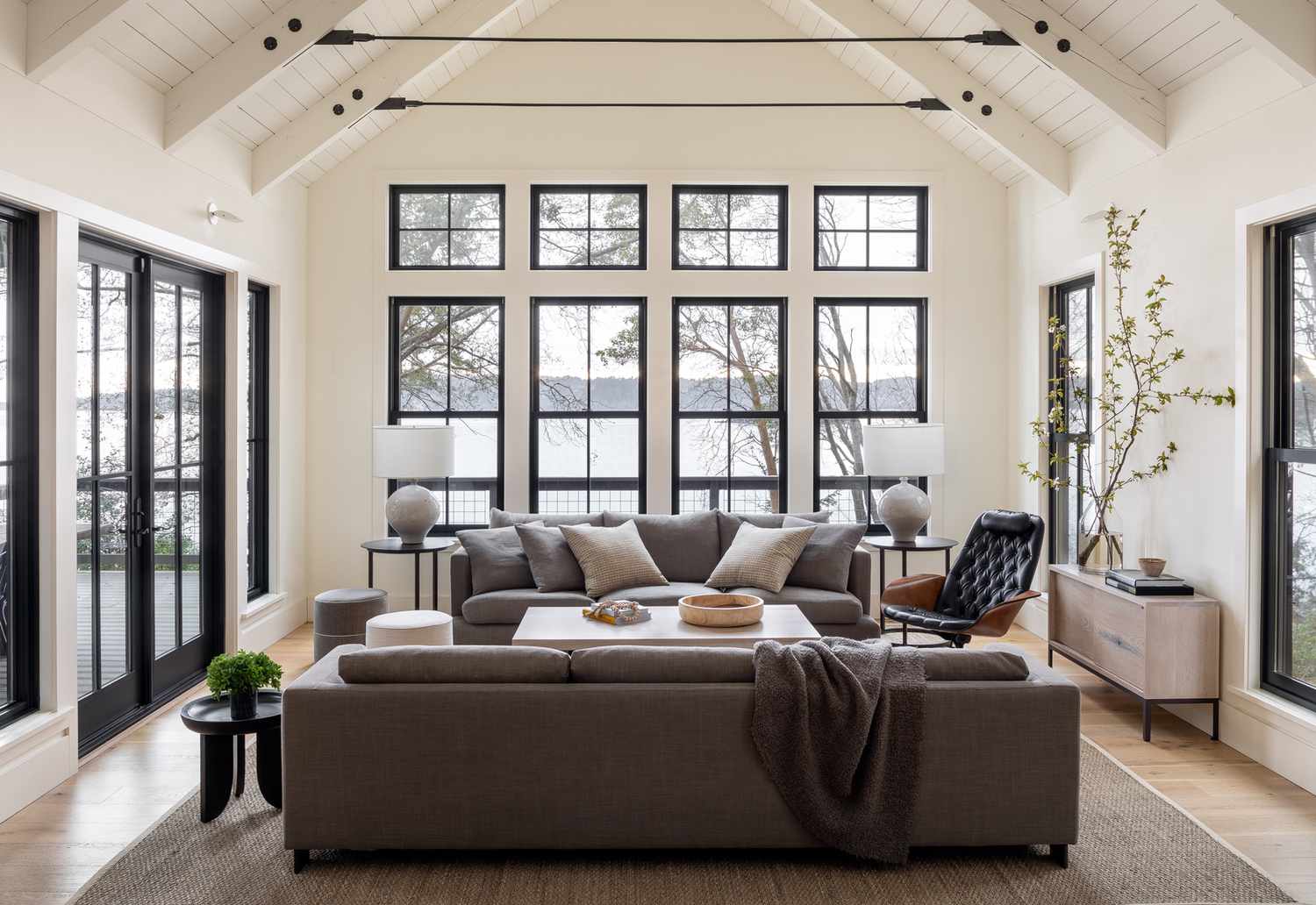
pacific-northwest-home-tour-great-room
Design Principles That Withstand Time
There are a few key design rules that are consistently found in timeless homes, no matter the era. In 2025, these principles are being reinterpreted through the lens of smart tech, eco-consciousness, and customization:
1. Quality Over Quantity
Invest in fewer, better pieces. A solid oak dining table or a handcrafted wool rug will last for decades, aging beautifully with time — unlike mass-produced items that quickly deteriorate.
2. Balance and Proportion
Furniture and decor should complement the room’s dimensions. Avoid overcrowding. In small spaces, opt for multifunctional pieces like ottomans with storage or extendable consoles.
3. Harmonious Color Palettes
Stick to 2–3 main colors and use variations in tone to create interest. Layer with textures and materials for depth rather than introducing clashing shades.
4. Statement, Not Clutter
Each room should have a focal point — an antique mirror, a sculptural floor lamp, a large painting — but the rest of the decor should support that, not compete with it.
Merging Tech and Tradition: The 2025 Interior Upgrade
The idea of integrating technology into timeless design may seem contradictory, but it’s exactly what modern homeowners are doing — and doing well. In fact, it’s now a requirement for many buyers and renters.
Here’s how 2025 homes are merging the two worlds:
| Timeless Element | Modern Upgrade | Purpose |
|---|---|---|
| Natural wood cabinetry | Motion-sensor underlighting | Enhances visibility and ambiance |
| Mid-century modern sofa | Built-in wireless charging armrests | Keeps devices accessible and charged |
| Linen drapes | Smart light-filtering glass | Adjusts transparency based on sunlight |
| Art walls | Rotating digital canvases | Customizable artwork on demand |
This fusion ensures your space doesn’t just look beautiful — it functions beautifully too.
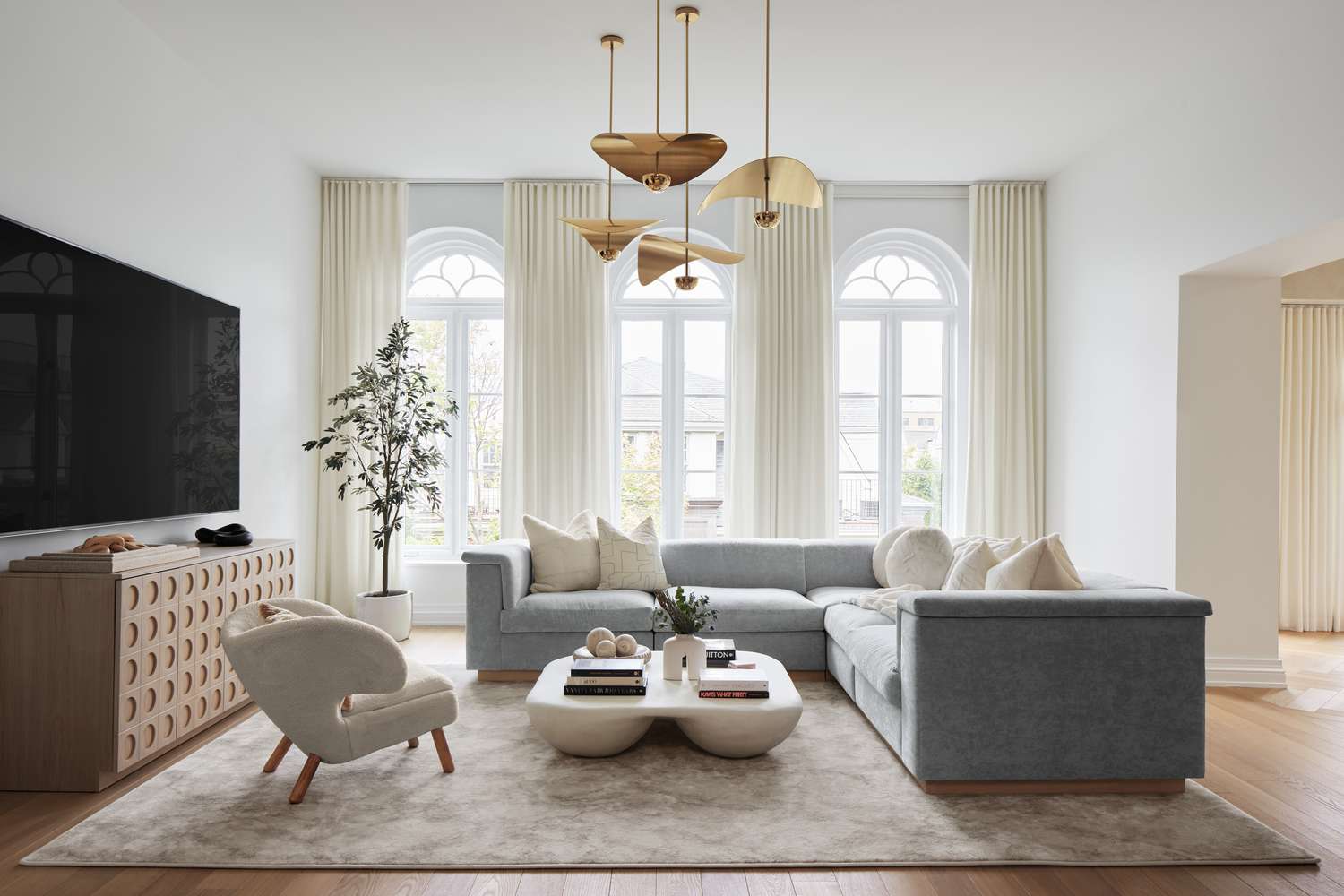
modern-living-rooms
Materials and Textures Leading the 2025 Trendline
If you’re choosing materials for your next redesign or remodel, here are the most popular timeless-but-modern choices being recommended by top interior designers this year:
-
Warm woods (like oak and walnut): Sustainable, natural, and grounding.
-
Bouclé and tweed fabrics: Adds rich texture to sofas and accent chairs.
-
Natural stone (like marble, travertine, soapstone): For countertops, backsplashes, and even lamp bases.
-
Matte metals (brass, blackened steel): Elegant finishes for fixtures and furniture legs.
-
Glass and mirrors: Used sparingly to open up space and reflect light.
These materials are not just beautiful — they age gracefully and work across styles, whether you’re going bohemian, coastal, or minimalist.
Room-by-Room: Applying Timeless Design
Let’s look at how to apply these principles practically in each area of your home:
Living Room
-
Use a neutral rug to anchor the space.
-
Choose a sofa with classic lines but consider a smart recliner system.
-
Incorporate built-in shelving with integrated lighting.
Kitchen
-
Shaker-style cabinets remain a staple.
-
Opt for quartz or marble countertops.
-
Add under-cabinet lighting and smart faucets.
Bedroom
-
Stick to calm, serene palettes (greys, beiges, earthy greens).
-
Upholstered headboards and layered bedding give a hotel feel.
-
Hidden storage and automated blinds keep the space clutter-free and restful.
Bathroom
-
Go for subway tiles or terrazzo for a vintage-modern mix.
-
Freestanding tubs, if space allows, offer a luxury feel.
-
Smart mirrors with built-in lighting and weather updates are now essentials.
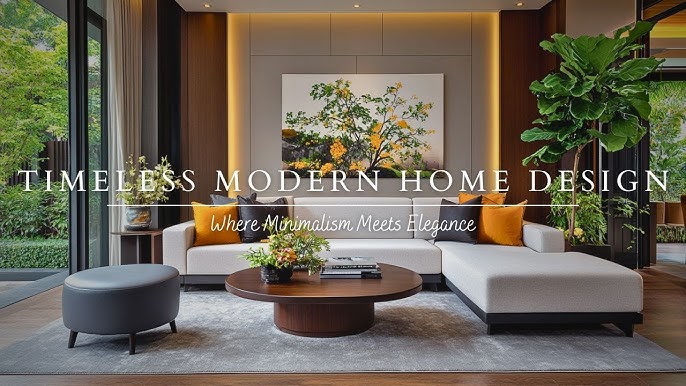
modern-living-rooms full furnish
The Role of Personalization
A timeless home doesn’t mean generic. In fact, the most lasting designs are deeply personal. Incorporate:
-
Heirloom items like inherited armchairs or pottery.
-
Local art or vintage prints.
-
Collections displayed in intentional ways (e.g., grouped books, framed photos, vintage maps).
When every piece tells a story, your home becomes unforgettable — and that never goes out of style.
Why Timeless Design Matters More Than Ever in 2025
With life becoming more digital and fast-paced, the home remains a grounding space. Timeless design encourages:
-
Sustainability: Fewer trends mean less waste.
-
Emotional connection: Classic spaces evoke comfort, familiarity, and identity.
-
Financial wisdom: Durable pieces and layouts save money long-term.
It’s not about chasing what’s hot this month. It’s about creating a home that will still feel beautiful and functional for the next decade.
Designing for Longevity, Comfort, and Culture
Understanding the Shift: From Temporary Trends to Meaningful Spaces
In an era of overexposure to digital content and viral micro-trends, homeowners in 2025 are pushing back against disposable design. The focus has shifted toward slow decorating — the intentional layering of a space over time, with personal history, durable items, and meaning baked into every choice. This philosophy aligns perfectly with the timeless decor approach, where every piece serves a lasting role and every design decision speaks to identity rather than influence.
Timeless design is not about playing it safe. It’s about playing it smart.
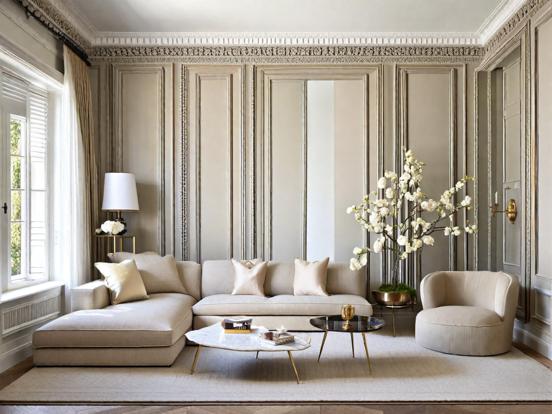
full furnish beautiful home decor
Cultural Storytelling Through Interior Design
One of the most powerful evolutions in 2025’s design world is the rise of culturally rooted spaces. More than ever, people are embracing their backgrounds, traditions, and stories — weaving them into modern, elegant rooms that celebrate authenticity.
Ways to infuse cultural elements into timeless interiors include:
-
Textiles: Think Moroccan rugs, Indian block-printed throws, or Japanese indigo-dyed cushions.
-
Art and artifacts: From African masks to Scandinavian ceramics, these can become bold focal points.
-
Color stories: Use palettes drawn from your heritage or places you love — Tuscan terracotta, Andean reds, or Mediterranean blues.
-
Craftsmanship: Furniture made using traditional joinery or local materials stands out while remaining sustainable.
By blending these rooted elements with neutral palettes and classic forms, you craft a home that’s both personal and enduring.
Top Interior Trends That Align with Timeless Design in 2025
While “trend” may sound like the opposite of timeless, certain 2025 design movements naturally support long-lasting spaces:
1. Japandi Design
A fusion of Scandinavian simplicity and Japanese wabi-sabi sensibility, Japandi focuses on:
-
Minimalism with warmth
-
Raw materials and natural finishes
-
Function-driven furniture
2. Biophilic Design
The connection to nature continues to dominate:
-
Living green walls
-
Indoor planters with low-maintenance species
-
Natural ventilation and daylight maximization
3. Earthy Maximalism
Not to be confused with cluttered decor, earthy maximalism uses:
-
Deep, grounding tones (clay, moss, ochre)
-
Bold textures and layers
-
Statement pieces surrounded by negative space
4. Hidden Tech
Modern homes don’t scream technology — they whisper it:
-
Recessed speakers
-
Smart thermostats behind beautiful wall panels
-
Voice-controlled lighting with artisan fixtures
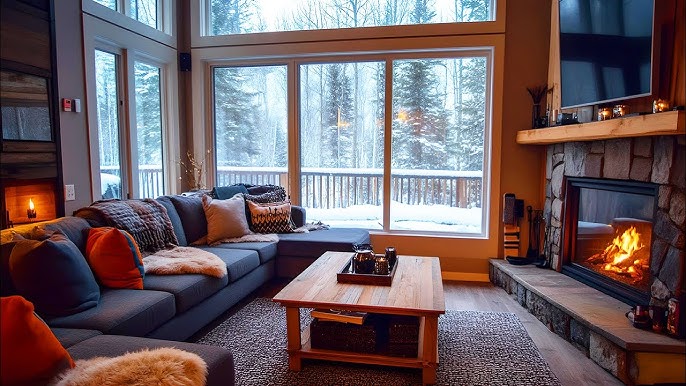
cozy full furnish home decor
Creating a Multi-Functional, Ever-Stylish Home
Today’s living environments must flex with our lives: from remote work to home fitness, hosting friends to winding down in solitude. That calls for multi-functional spaces that don’t compromise on beauty or comfort.
Here’s a look at how homeowners are designing spaces to do it all:
| Room | Traditional Function | 2025 Update | Timeless Touch |
|---|---|---|---|
| Living Room | Entertaining and lounging | Doubles as remote workspace | Built-in bookshelf + sleek desk niche |
| Kitchen | Cooking and eating | Integrated smart devices & gathering hub | Quartz island + artisan backsplash |
| Bedroom | Sleeping and relaxation | Meditation space + smart lighting routines | Soft palettes + upholstered panels |
| Guest Room | Short-term stays | Office by day, room by night | Murphy bed in walnut cabinetry |
This fusion of timeless design and flexibility ensures your home continues serving you — no matter how life evolves.
Sustainability: The Heart of Long-Lasting Interiors
Sustainability is more than a buzzword in 2025 — it’s a design imperative. Timeless interiors are naturally eco-friendly because they reduce waste, avoid constant replacement, and often prioritize materials that are responsibly sourced.
Eco-conscious design choices that align with timeless decor:
-
Refinishing old wood pieces instead of buying new
-
Choosing low-VOC paints in soft, enduring tones
-
Investing in heirloom furniture that can be passed down generations
-
Opting for natural textiles (linen, wool, cotton) over synthetics
And as certified sustainable materials become more accessible and affordable, homeowners can combine elegance with ethics — guilt-free and gorgeous.
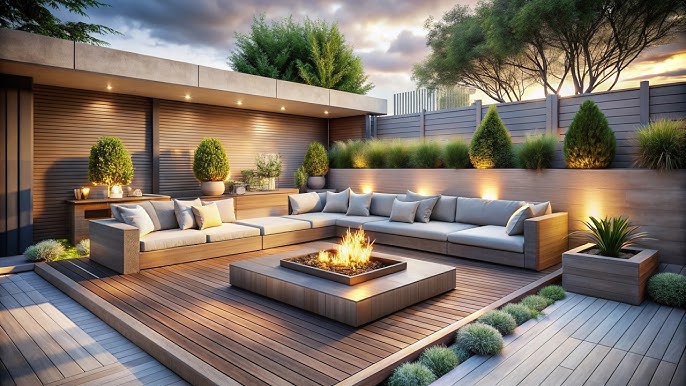
Outdoor Space: Smart Yard & Patio Ideas
The Psychology of Timeless Design
Did you know your environment can actually influence your mental health?
Timeless design principles often correlate with key psychological triggers that support calm, clarity, and well-being:
-
Symmetry and balance create mental ease.
-
Natural elements evoke a sense of grounding.
-
Consistency in color and texture reduces cognitive overload.
-
Personal touches foster emotional connection and pride.
This is why timeless homes feel “just right.” They’re not overstimulating or sterile — they hit the sweet spot between beauty, function, and familiarity.
Common Mistakes That Ruin Timeless Spaces
Even the most well-intentioned design plans can go astray. If you’re aiming for a space that will look great now and in ten years, avoid these common traps:
Over-relying on fast furniture
Big-box, low-cost items often lack durability and start to look dated quickly. Invest strategically.
Chasing too many micro-trends
Trying to keep up with every new color or decor fad will leave your space feeling chaotic.
Neglecting comfort
No matter how “Pinterest-worthy” a chair looks, if it’s not comfortable, it doesn’t belong in your timeless space.
Ignoring lighting
Lighting transforms a room. Prioritize natural light and layer your lighting plan: ambient, task, and accent.
Poor material choices
Fake finishes or overly shiny surfaces often signal cheapness — and age poorly.

Transform Your Outdoor Space: Smart Yard & Patio Ideas for 2025
What Makes a Room Instantly Feel Timeless?
If you’re walking into a space and wondering if it will stand the test of time, look for these five quick signs:
-
Neutral base with warmth (not stark coldness).
-
Functional flow — everything feels in its place.
-
Natural elements used honestly, not artificially.
-
Quality over quantity in furnishings and accents.
-
Personality — it feels like someone lives here, not like a showroom.
The Art of Finishing Touches and Living with Intention
Layering with Purpose: Final Details that Make the Difference
After the major layout, color palette, and furniture choices are in place, what truly breathes life into a timeless home are the intentional finishing touches. These are the elements that bring soul, narrative, and richness to a space — making it feel curated, not decorated.
Some powerful finishing ideas include:
-
Books with meaning: Fill shelves with volumes you’ve read, aspire to read, or that reflect your values.
-
Scent strategy: Use subtle essential oil diffusers or candles in classic scents like cedarwood, bergamot, or vanilla to create consistent sensory memory.
-
Layered lighting: Wall sconces, table lamps, and dimmable overhead lights offer ambiance and flexibility.
-
Seasonal rotation: Swap small pieces like pillow covers, throws, and vases seasonally to keep spaces fresh without redesigning.
-
Vintage pieces: Even one thrifted or heirloom piece (like a mirror or side table) can instantly ground a room.
These touches don’t just enhance design — they reflect your story. And timeless homes, above all, tell stories worth keeping.
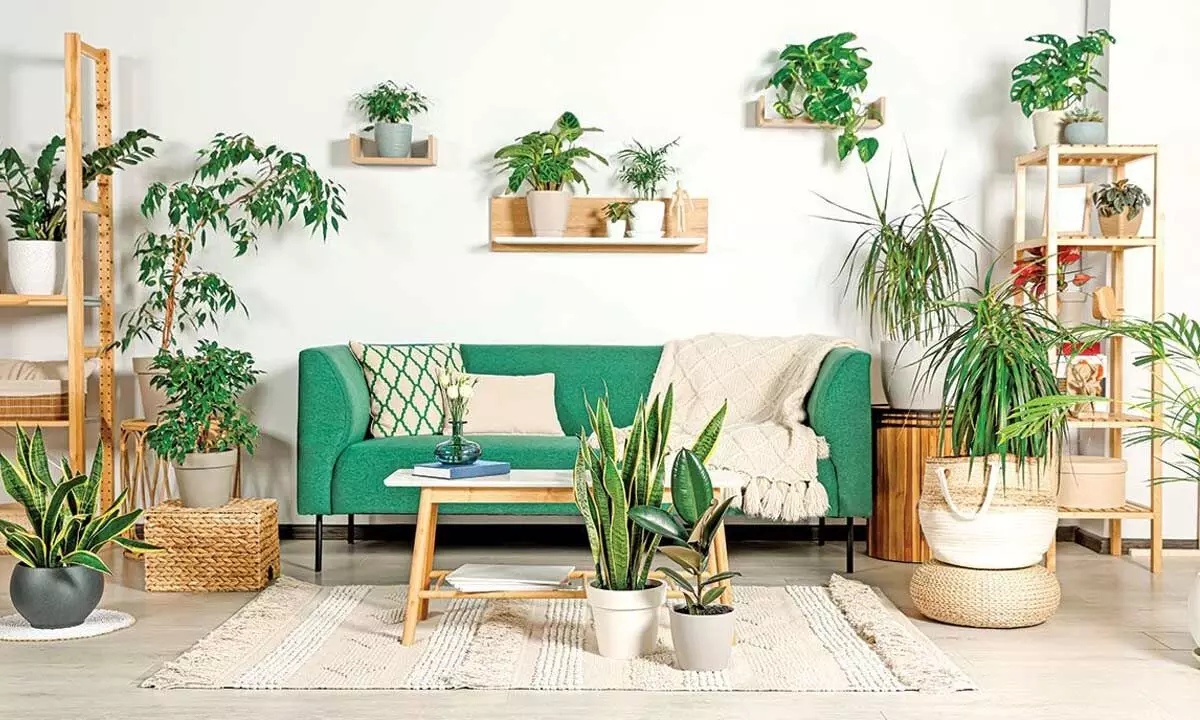
indoor green home-plants
The Balance Table: Trend vs Timeless Decor Elements
Let’s take a quick comparative look at design choices and whether they lean toward temporary trendiness or lasting style.
| Element | Trendy | Timeless |
|---|---|---|
| Wall colors | Neon green, millennial pink | Soft white, taupe, greige |
| Furniture | Curved bouclé everything | Clean-lined walnut or oak |
| Fabrics | Velvet in odd shades | Linen, cotton, wool |
| Decor motifs | Mushrooms, checkerboard, smiley faces | Organic forms, nature-inspired patterns |
| Artwork | Poster prints from TikTok shops | Framed photographs, local artists, black-and-white series |
| Layouts | Maximalist clutter | Flow-driven, spacious composition |
Use this table as a filter before your next purchase: if it feels rooted in Instagram trends, pause. If it feels like it could live in a 1925 Paris apartment or a 2025 Brooklyn loft, proceed.
How Technology Integrates into Timeless Homes
Tech isn’t going anywhere — and that’s a good thing. But the key is to integrate it seamlessly, without disrupting the aesthetic flow of your space.
Here’s how 2025 homeowners are embedding smart technology without compromising elegance:
-
Voice control over visible buttons (via Alexa or Google Home)
-
Hidden speakers behind wood panels or art frames
-
Smart lighting scenes set to match morning/evening routines
-
Motorized drapes or blackout blinds in natural fabric finishes
-
Climate control zones managed by sleek, intuitive apps
These upgrades don’t scream “future”; they whisper convenience within a space that still feels warm, classic, and human.
Living with Less but Better: The Minimalist-Timeless Merge
Minimalism isn’t about empty rooms — it’s about meaningful living. And that idea fits perfectly with timeless design.
Here are a few guiding minimalist principles that boost timelessness:
-
Edit often: If something doesn’t serve you or spark joy (hello, Marie Kondo), remove it.
-
Choose fewer, higher-quality pieces: A solid oak coffee table beats a dozen trendy side tables.
-
Respect negative space: Every room needs breathing room.
-
Avoid duplication: You don’t need five different kinds of floor lamps or nine throw pillows.
This blend of less but better ensures your home is never crowded — just calm.
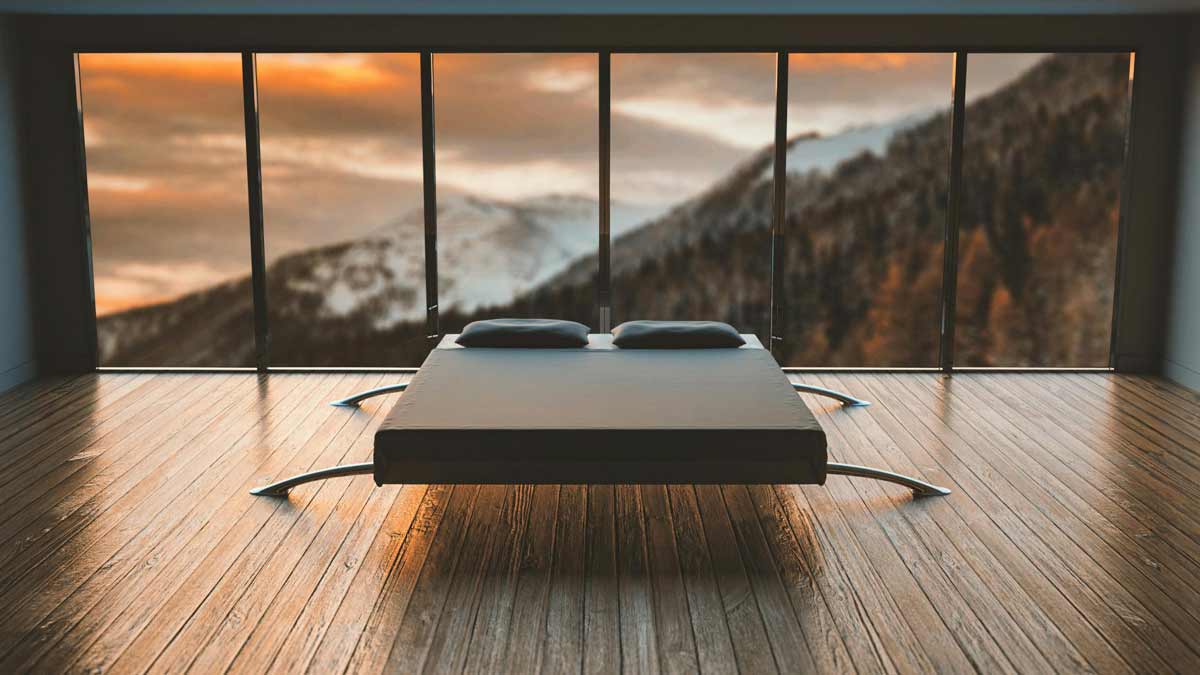
Transforming Home Furnishing in 2025: Personalization and Innovation
FAQ: Timeless Home Design in 2025
What makes a home truly timeless?
A blend of personal meaning, functional design, and aesthetic restraint. It’s never about following every trend — it’s about creating space for your story to unfold.
Can modern elements fit into timeless spaces?
Absolutely. Clean lines, smart tech, and minimalist furniture can all support timelessness when balanced with natural materials and personal decor.
How can I start transitioning my current home to timeless decor?
Start by decluttering. Then choose one room and introduce neutral tones, durable materials, and one or two legacy pieces. Build slowly — timeless doesn’t mean instant.
Is timeless the same as traditional?
No. Traditional is a style. Timeless is a philosophy. Even bold, modern, or boho homes can feel timeless if they prioritize longevity, comfort, and soul.
Are there color schemes that always work?
Yes. Warm whites, natural wood tones, soft greys, navy, olive, and muted clay tones have endured for decades — and will continue to do so.
Future Trends in Home Decor: What to Expect in 2025 and Beyond
As we move deeper into the 2020s, the concept of timelessness in home design evolves alongside growing technological advancements, sustainability demands, and a shift in the way we live. Here are some emerging trends for the future of home decor that blend seamlessly with timeless design, offering innovative and forward-thinking solutions while maintaining elegance and sustainability.
The Rise of Biophilic Design and Green Spaces
One of the most significant trends gaining momentum is biophilic design, which aims to bring nature indoors. This isn’t just about houseplants — it’s about integrating natural elements into the fabric of the home. In 2025 and beyond, expect to see:
-
Living walls (vertical gardens) to bring nature into urban spaces
-
Natural materials like wood, stone, and bamboo used more extensively in furniture and finishes
-
Natural light optimization with smart window designs and sustainable glass technology that adjusts light levels
The future of home design will blur the line between the outdoors and indoors, making nature a constant companion. This trend not only promotes well-being but also aligns with the timeless principles of connecting to the environment.
Sustainable and Eco-Friendly Materials Take Center Stage
Sustainability will continue to define future home decor trends, and eco-friendly materials will dominate design decisions. The demand for renewable, recyclable, and non-toxic materials is rising, and 2025 is expected to be the year of eco-conscious homes. Look for:
-
Recycled and upcycled furniture: Designers will increasingly use reclaimed wood, metal, and other materials for a unique look with a smaller carbon footprint.
-
Natural fabrics: Linen, hemp, and organic cotton will see more use in upholstery, curtains, and bedding, creating a healthier, chemical-free living environment.
-
Non-toxic paints and finishes: Homeowners will demand safe, VOC-free options for walls, furniture, and flooring, making eco-friendly home design more accessible.
This shift to eco-conscious living aligns perfectly with timeless design, as natural materials age beautifully, require minimal maintenance, and offer lasting durability.
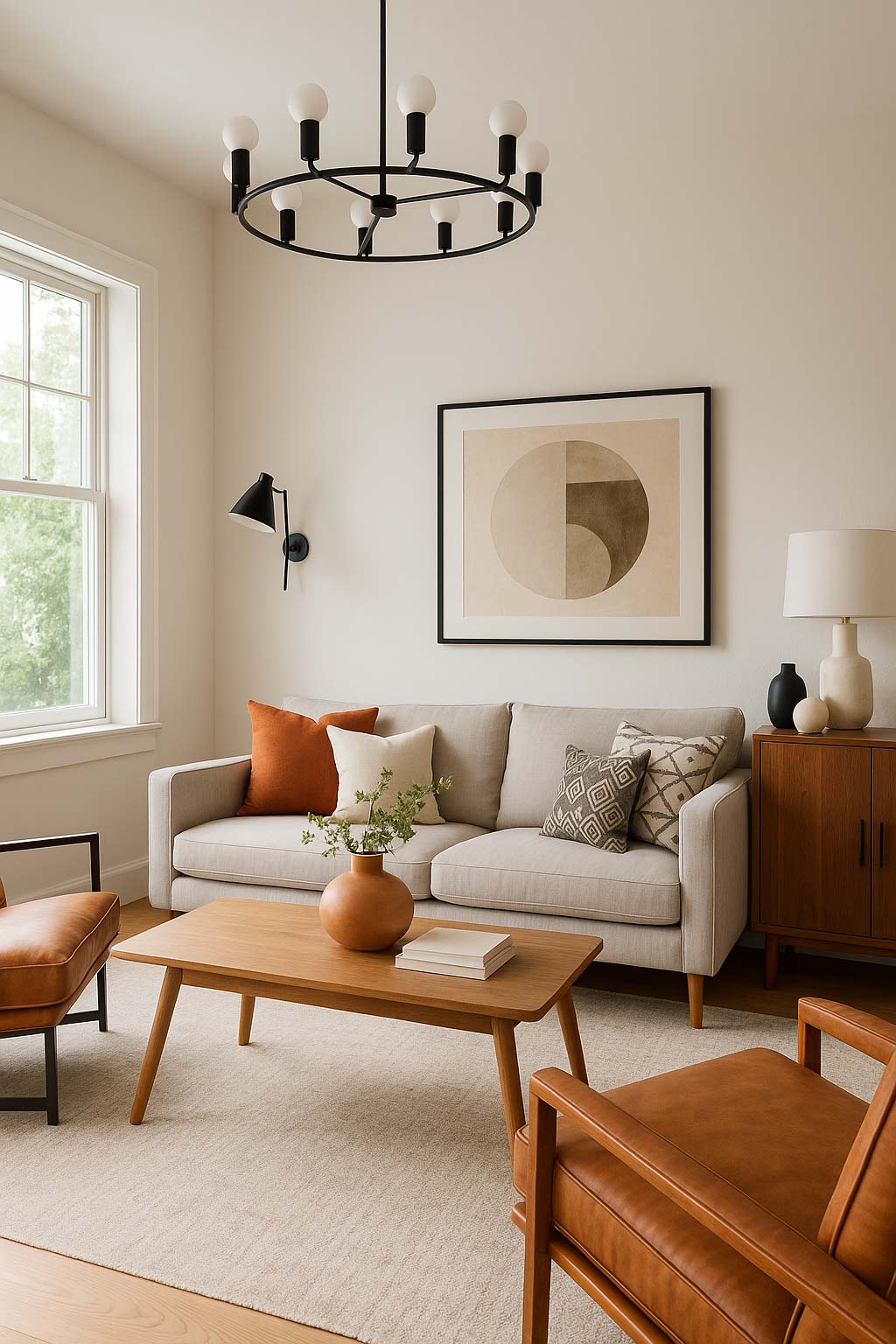
interior-design1
Smart Homes with a Human Touch: Technology in 2025
While technology has already infiltrated our lives, the future of home decor in 2025 will integrate smart devices in a way that feels completely natural and intuitive. Gone will be the days of clunky, tech-heavy features. Instead, we will see:
-
Invisible technology: Devices like hidden speakers, smart mirrors, and built-in home assistants will seamlessly blend into the decor, offering convenience without disrupting aesthetics.
-
Personalized environments: Think of lighting that adjusts to your mood, or temperature-controlled zones that sense when you’re in a room and respond accordingly.
-
Sustainable smart tech: Solar panels, energy-efficient appliances, and intelligent water management systems will allow homeowners to reduce their environmental footprint while maintaining a sleek, modern aesthetic.
These innovations will help homes adapt to changing needs without losing their timeless appeal. Smart homes of the future will be both functional and beautiful, offering comfort, efficiency, and sustainability in equal measure.
Multi-Functional Spaces and Adaptable Furniture
With the rise of flexible living, the demand for multi-functional spaces and adaptable furniture will continue to shape home decor. As more people work from home, create personal sanctuaries, and live in smaller spaces, furniture will become even more versatile and space-saving. Expect to see:
-
Modular furniture: Items that transform from a sofa to a bed, or a dining table to a workspace, will allow homeowners to adapt to their evolving lifestyles.
-
Integrated technology in furniture: Smart desks with built-in charging ports, beds with temperature regulation, and furniture that incorporates tech seamlessly will grow in popularity.
-
Foldable walls: To create temporary spaces or open-concept living, foldable, sliding, and movable walls will allow a room to serve multiple purposes throughout the day.
These pieces will not only be functional but will also be crafted from timeless materials like wood, metal, and stone, ensuring that they look good and age gracefully.
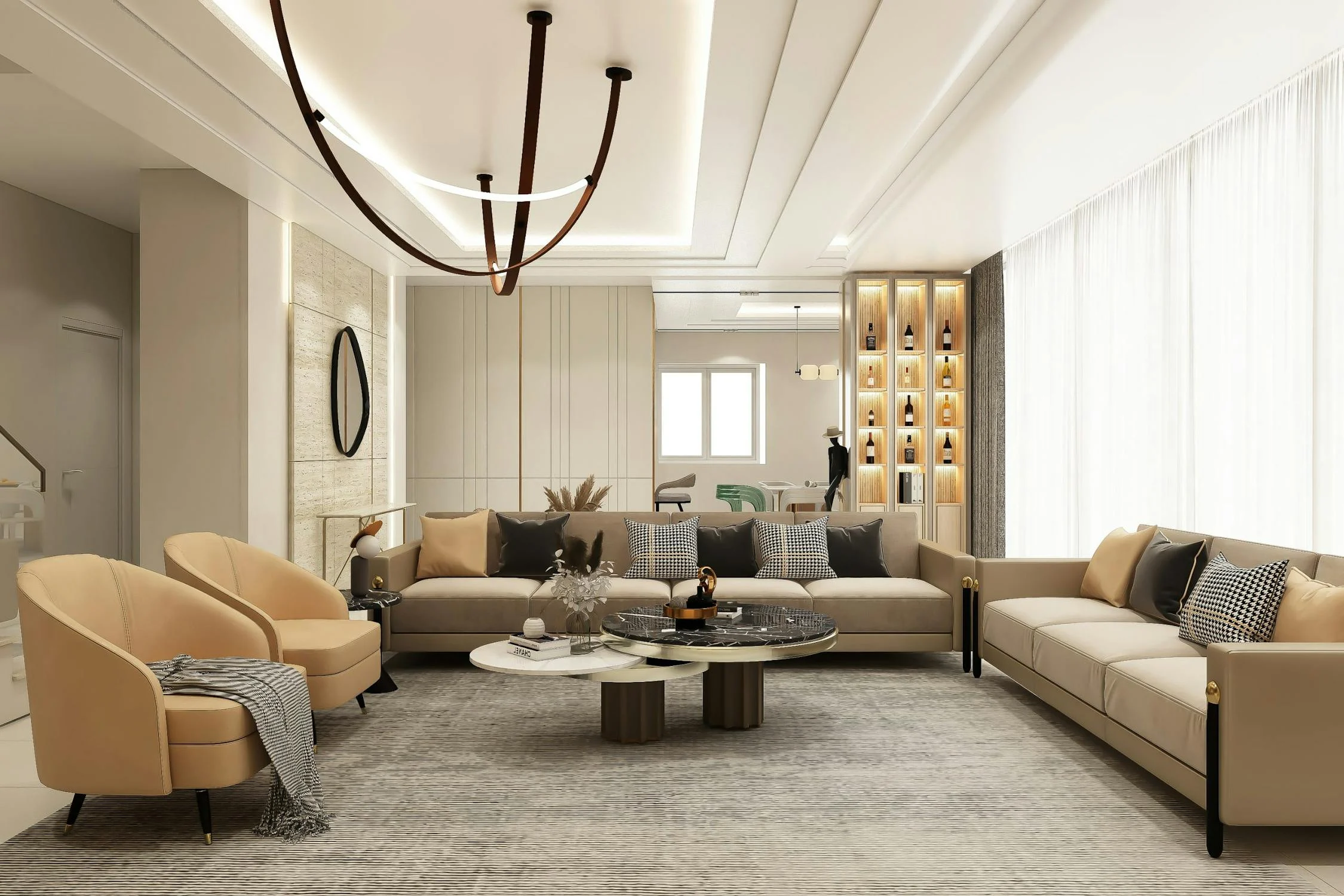
🟢 This modern living room showcases a blend of Scandinavian and luxury styles.
Minimalist Luxury and Streamlined Spaces
The future of home decor will see luxury in the form of simplicity. As homeowners continue to value quality over quantity, expect to see a rise in minimalist luxury that embraces sleek lines, high-quality materials, and refined design with a focus on craftsmanship. This will include:
-
Simple, yet elegant color palettes: Think whites, grays, and earthy tones complemented by luxurious textures such as marble, velvet, and polished wood.
-
High-end, custom-designed furniture: Instead of mass-produced items, there will be a demand for bespoke pieces made with superior materials.
-
Uncluttered spaces: The minimalist approach will extend to decor, where fewer but more meaningful items will define a room, letting the materials and design speak for themselves.
By investing in fewer, more luxurious pieces, homeowners will continue to create spaces that feel both timeless and luxurious, without feeling overdone or cluttered.
The Integration of Art into Design
Art has always played a significant role in the timeless design of homes, but in 2025, expect to see it integrated even more deeply into both architecture and furnishings. This means:
-
Art as part of structural design: From murals on ceilings to art embedded into floors and walls, artwork will no longer be relegated to frames and canvases but will become an integral part of the space itself.
-
Personalized art installations: Homeowners will work with artists to create one-of-a-kind pieces that reflect their personal journey, beliefs, or values, adding depth and emotion to their space.
This shift reflects a growing desire for personalized decor, as people want their homes to reflect their identities, while also connecting to timeless cultural and aesthetic references.
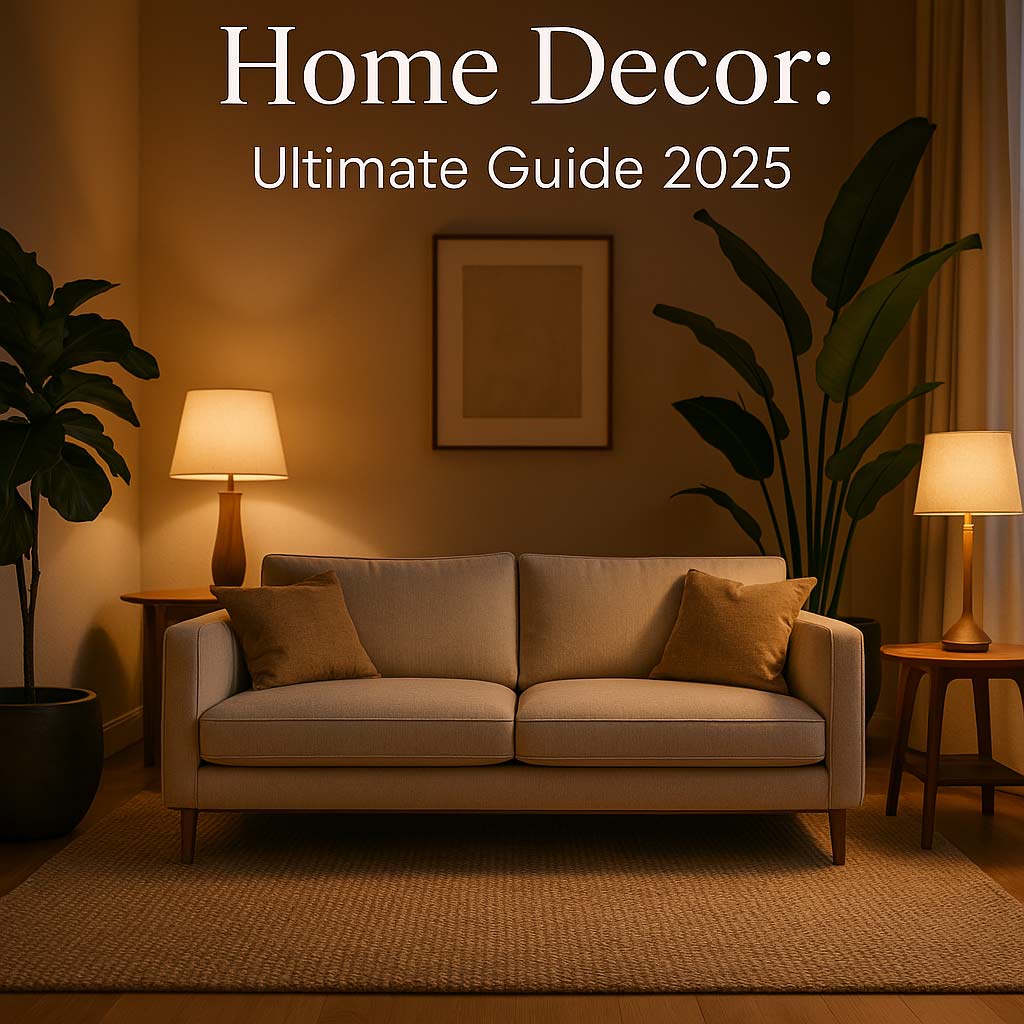
Home Decor: The Ultimate Guide to Designing a Stylish, Comfortable Home
The Future of Timeless Design
The future of home decor is not a battle between modern trends and timeless style, but a harmonious blending of both. Sustainability, personalization, and technology will be at the forefront of design decisions, allowing homeowners to create spaces that are both forward-thinking and rooted in tradition.
While styles will continue to evolve, the core principles of functionality, quality, and emotion will remain unchanged. The homes of the future will be flexible, efficient, and beautiful, reflecting a growing desire for comfort, connection, and sustainability in our built environments.
Timeless Material Choices for Classic, Enduring Design
One of the pillars of timeless home decor is the careful selection of materials that endure not only in quality but also in their ability to transcend trends and stay relevant across generations. Whether you’re designing a living room, a kitchen, or even a bathroom, the materials you choose have the power to make your home feel both modern and enduringly elegant. Here’s a closer look at some of the key materials that define timeless home decor.
Natural Stone: Durability and Elegance
Natural stone is one of the oldest and most enduring materials in home design. Its strength and beauty have stood the test of time, making it a prime choice for anyone looking to create a timeless atmosphere. Here are a few stone options that will never go out of style:
-
Marble: Known for its luxurious feel and unique veining, marble is a symbol of classic beauty. It can be used for countertops, flooring, and even decorative features like fireplaces or backsplashes. While marble has evolved in terms of finishes (matte vs. glossy), it remains the pinnacle of refined elegance.
-
Granite: While marble is often associated with luxury, granite is a more durable and practical alternative, offering similar aesthetics. With its rich texture and variety of patterns, granite can be used for countertops, flooring, and even outdoor spaces. The natural variations in color ensure that no two pieces are ever the same.
-
Limestone and Travertine: These stones offer a more earthy tone and rustic appeal. They’re perfect for creating a natural, warm feel while still maintaining a level of sophistication that will last through decades. Limestone works particularly well in entrances and kitchens, while travertine is often favored for bathrooms and outdoor spaces.
Stone’s durability, resilience to wear and tear, and natural beauty make it a staple in homes aiming for timeless elegance.
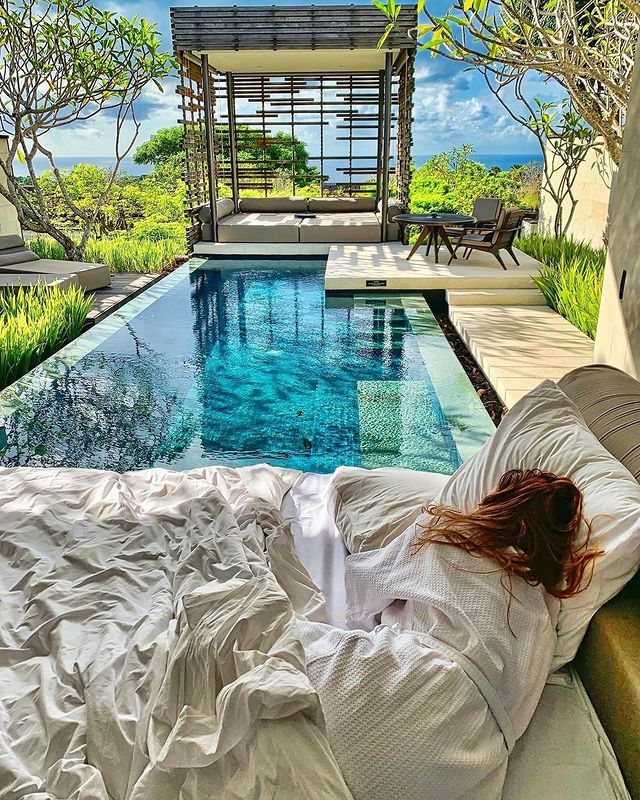
lady in bed
Wood: Warmth and Versatility
Wood is another timeless material that blends seamlessly into various styles, whether rustic, mid-century modern, or contemporary. Wood adds a natural warmth, texture, and earthiness that creates balance with colder, harder materials like metal or glass. Some of the best options include:
-
Oak: Known for its strength and rich texture, oak is a classic choice in furniture, flooring, and cabinetry. Its versatility allows it to complement a wide range of styles, from traditional to modern. The grain patterns in oak also make it visually striking, creating interest and texture in any space.
-
Walnut: With its rich, dark color and fine grain, walnut exudes sophistication and luxury. It’s often used in high-end furniture and custom cabinetry, offering timeless appeal with a touch of warmth.
-
Reclaimed Wood: As part of the growing movement toward sustainability, reclaimed wood brings not only historical significance but also a unique charm to the design. Each piece carries a story and can be used for floors, feature walls, shelves, or furniture, making it an excellent way to add a personal touch to timeless spaces.
-
Teak: Teak wood is renowned for its weather resistance, making it an excellent choice for both indoor and outdoor furniture. Its golden hue, smooth texture, and natural oils make it highly durable and incredibly beautiful, especially in spaces like patios and kitchens.
Wood’s warmth and organic nature make it a key material for balancing modern sleekness with timeless elegance.
Metal: Elegance and Modernity
Metals are often associated with more modern designs, but they can be incorporated into timeless decor through careful selection of finishes and styles. When used thoughtfully, metal can provide a sense of elegance, strength, and sophistication that endures.
-
Brass: A go-to choice for timeless hardware, brass continues to be favored for its warmth and luxurious appeal. Whether in light fixtures, faucets, cabinet handles, or even furniture accents, brass adds a refined touch to spaces with classic charm.
-
Bronze: Known for its deep patina that develops over time, bronze is an excellent option for fixtures and accents that evolve in character. Its rich tones lend a sense of history and refinement to both traditional and modern homes.
-
Stainless Steel: In contrast to the warmer tones of brass and bronze, stainless steel is sleek, durable, and incredibly functional. Its modern aesthetic and clean lines make it ideal for kitchens, bathrooms, and outdoor spaces, where practicality is essential but elegance is still desired.
-
Copper: With its reddish-brown hue and ability to develop a patina over time, copper can add a vintage, rich feel to both modern and traditional designs. Used in lighting, backsplashes, and appliances, copper brings texture and warmth into a space.
By combining metals in thoughtful ways, designers can create a balance of elegance and modernity that still feels classic.
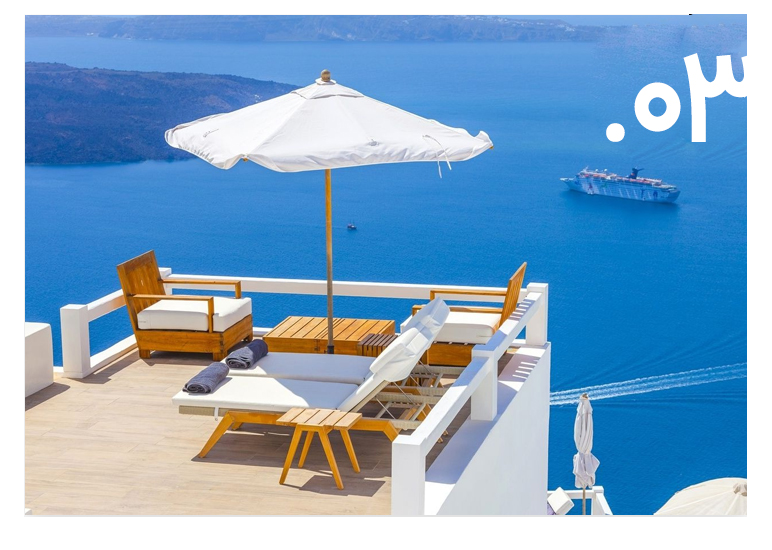
dreamy place for living!
Glass: Transparency and Light
Glass may seem like a modern choice, but its timeless appeal lies in its ability to create light-filled, airy spaces that enhance the beauty of any room. Whether in windows, balustrades, or decorative accents, glass brings clarity and openness to a space, allowing other materials to take center stage. Here are a few ways glass remains integral to timeless design:
-
Frosted and Textured Glass: These types of glass offer privacy without sacrificing light. They can be used in partition walls, doors, and shower enclosures, adding elegance and a sense of openness to spaces without overwhelming them.
-
Glass Balustrades: Instead of heavy metal railings, glass balustrades provide a clean, unobtrusive element that preserves sightlines and emphasizes the surrounding materials, such as wood or stone.
-
Glass Accents: Whether in light fixtures, vases, or tables, glass continues to serve as a material that reflects light and creates a sense of openness. Its simplicity and clarity ensure it never goes out of style.
The transparency of glass allows light to flow freely throughout a home, creating spaces that are both elegant and serene.
Textiles: Comfort, Warmth, and Texture
Textiles are perhaps the most versatile materials in interior design, offering countless possibilities for creating comfort, texture, and style. For a timeless look, focus on high-quality fabrics that not only feel luxurious but also stand the test of time.
-
Linen: Light, breathable, and elegant, linen is perfect for everything from curtains to upholstery. Its natural texture and softness offer a rustic elegance that can be incorporated into both traditional and modern designs.
-
Wool: A timeless fabric for carpets, throws, and cushions, wool offers both warmth and durability. Its texture brings depth and richness to any space, while its natural properties make it a sustainable choice.
-
Velvet: Known for its opulent feel and rich appearance, velvet remains a popular choice for upholstered furniture, cushions, and curtains. Its ability to catch the light and create a luxurious ambiance makes it perfect for living rooms, bedrooms, and dining areas.
Textiles add a sensory dimension to home decor, transforming any room into a welcoming, elegant space.
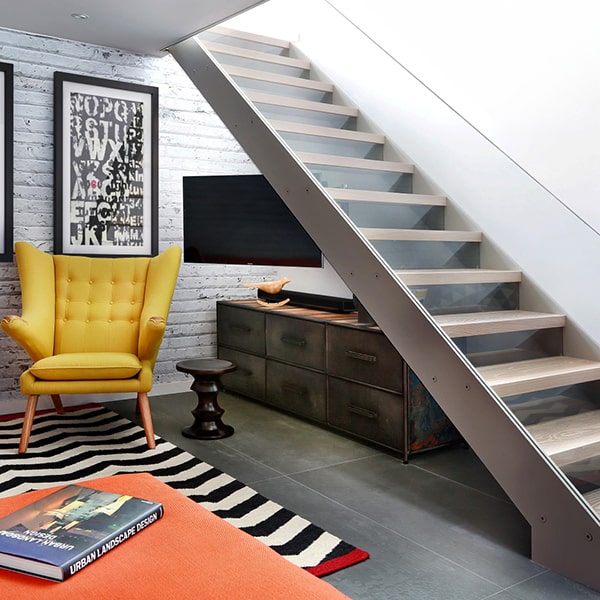
small home decor
Materials that Last
The materials that make up your home’s design should embody both functionality and beauty, offering a timeless appeal that never fades. By choosing natural stone, wood, metal, glass, and high-quality textiles, you’re investing in a home that will feel refined and comfortable for years to come.
Incorporating these materials thoughtfully ensures that your design will evolve with the times while maintaining an enduring charm. These timeless materials can blend seamlessly into modern homes, creating spaces that not only reflect current trends but also honor the timeless principles of quality, craftsmanship, and elegance.
Case Studies: Homes that Combine Timeless Design with Modern Living
Incorporating timeless design elements into modern living is an art that requires a careful balance between classic materials, modern functionality, and the need for comfort and style. Let’s look at several case studies that exemplify how homeowners and designers have successfully blended timeless materials with modern living spaces.
Case Study One: The Modern Classic in Los Angeles
In a Los Angeles hillside home, the owners sought to combine their love for mid-century modern design with the need for a practical, family-friendly space. The result is a beautiful example of how timeless materials can create a sleek, modern home without feeling sterile or cold.
Design Features
-
Natural Stone: The home uses quartzite for countertops and a large stone feature wall in the living room. The stone’s cool tones complement the warm wood accents throughout the house, such as oak floors and walnut cabinetry.
-
Wood: The clean lines of mid-century modern furniture are softened by rich wood paneling and cabinetry, creating a connection to nature and a sense of comfort in the modern space.
-
Glass: The designers used floor-to-ceiling glass windows to take full advantage of the surrounding views while maintaining a connection to the outdoors. Glass doors open up to a spacious outdoor living area, blending the interior with the landscape.
-
Metal: Subtle accents of brushed brass can be found in light fixtures and hardware throughout the home, providing a touch of elegance and warmth to the overall design.
This home exemplifies how modern living can coexist with timeless materials. The use of stone, wood, and glass ensures that the space feels both contemporary and warm.
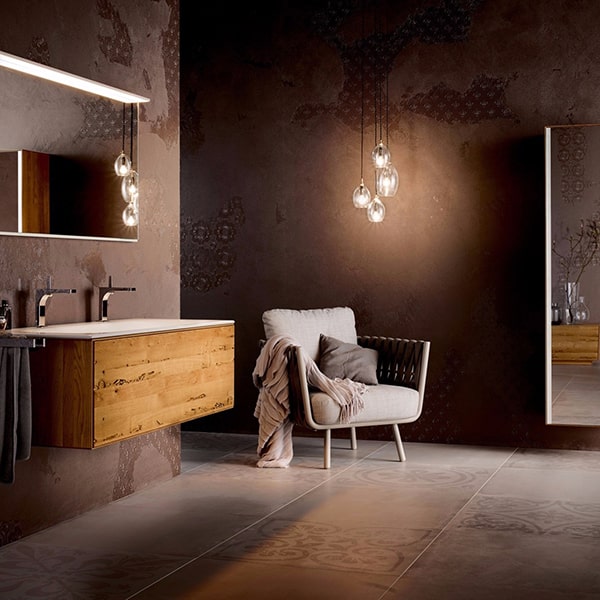
beautiful lovely home
Case Study Two: The Urban Loft in New York City
This New York City loft is a prime example of how industrial style can be combined with timeless materials to create a comfortable, luxurious living space. The homeowners wanted to create a home that was both functional and inviting, while showcasing the beauty of classic materials.
Design Features
-
Natural Stone: Marble is used for the kitchen countertops and backsplash, adding a sense of timeless luxury to the modern, open-concept space. The marble’s veining offers a unique visual interest that contrasts beautifully with the surrounding modern finishes.
-
Wood: The loft includes rich dark wood floors and reclaimed wood beams that run across the ceiling. These materials provide texture and warmth, balancing the sleek, minimalist lines of the modern furniture.
-
Metal: Exposed steel beams and metal staircases highlight the industrial nature of the space, while also offering the modern edge the owners were looking for. The juxtaposition of the polished metal with the warm wood and luxurious marble creates a layered, sophisticated atmosphere.
-
Textiles: High-quality fabrics like linen and wool are used for the furniture, with plush velvet cushions adding a touch of luxury and softness.
The blend of stone, wood, and metal in this loft allows it to feel modern, but also deeply rooted in timeless design principles. It’s a unique fusion that highlights how contemporary design elements can integrate with classic materials to create a timeless, yet functional living environment.
Case Study Three: The Coastal Retreat in California
For a coastal retreat in California, the owners desired a space that felt both modern and relaxing, with an emphasis on natural beauty and easy maintenance. This design strikes a balance between elegance, simplicity, and comfort, showing how timeless materials can elevate a space near the water.
Design Features
-
Natural Stone: Travertine flooring is used throughout the house, including the bathroom, entryway, and patio areas. This stone provides a soft, neutral palette that enhances the overall relaxed atmosphere while being incredibly durable and easy to maintain.
-
Wood: Rich teak furniture, including the dining table and bedside tables, creates a sense of warmth and sophistication while contrasting beautifully with the light-colored stone flooring.
-
Glass: To take full advantage of the breathtaking ocean views, large sliding glass doors open the living space to the outdoor patio. Glass balustrades create a seamless transition between the indoor and outdoor living areas, keeping the focus on the views.
-
Textiles: Soft linen curtains allow for privacy without blocking out natural light. Cotton and wool rugs are strategically placed throughout the home to add comfort while maintaining a relaxed, airy feel.
This home combines natural stone, wood, and glass to create a timeless coastal retreat that will remain both stylish and functional for years to come. The designers achieved a modern yet classic aesthetic that perfectly complements the natural beauty of the oceanfront location.
Case Study Four: The Sustainable Family Home in Oregon
This sustainable family home in Oregon is a prime example of how timeless materials can be used to create a space that is eco-friendly without sacrificing style or comfort. The owners were committed to creating a home that respects the environment while maintaining a timeless aesthetic.
Design Features
-
Reclaimed Wood: Reclaimed barn wood is used throughout the home for floors, walls, and ceilings, giving the space a rich, rustic charm. The use of reclaimed wood also supports the homeowners’ commitment to sustainability, as it reduces the demand for new materials.
-
Natural Stone: A feature wall made of locally sourced stone provides a striking visual element in the living room. The stone adds texture and depth to the space, while maintaining the earthy, organic aesthetic of the home.
-
Metal: Recycled steel is used for structural elements, such as beams and staircases, lending an industrial touch to the home. The natural patina of the metal adds character and complements the other materials.
-
Textiles: Eco-friendly fabrics, such as organic cotton and hemp, are used for upholstery and window treatments. These materials add softness to the space while aligning with the home’s sustainable values.
This eco-conscious home is an excellent example of how timeless materials can be combined with modern sustainable living principles to create a beautiful, functional, and environmentally friendly home.
The Power of Timeless Design
These case studies highlight the transformative power of timeless materials in creating modern homes that feel both contemporary and classic. Whether it’s stone, wood, metal, or glass, choosing materials that have stood the test of time allows homeowners to build spaces that are beautiful, functional, and durable.
By combining these materials with modern design techniques, designers can create homes that embrace the future while respecting the past. The result is a home that feels timeless, yet perfectly suited to modern living.
Conclusion: Home as Legacy, Not Lifestyle
Timeless design isn’t about creating magazine-ready rooms. It’s about creating a sanctuary that evolves with you — one that resists burnout, embraces your roots, and feels like home whether you’re 30 or 70.
In a fast-paced world driven by what’s new, embracing the eternal is radical. It’s meaningful. And it’s yours.
As you consider your next home update, ask yourself not what’s hot right now, but:
Will I still love this in ten years?
If the answer is yes — you’re already living timelessly.
Watch: How Designers Are Creating Forever Homes
👉
A beautifully produced feature on how real designers combine legacy, culture, and modern function to create spaces that age gracefully.
Backlink Recommendations (Authoritative 2025 Sources)
To guide your next design move with confidence, check out these trusted resources:
These sources offer consistent insight into what truly lasts in home decor — and how you can replicate it beautifully.


